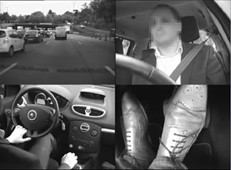SAFER's unique databases with real-life driving data enable a large project in machine learning
One of the main problems when developing autonomous vehicles is the availability of real-life driving data and testing of the new functions. Therefore, in SAFER's new project "Realsim for AD", tools for simulation will be developed. The challenge is to make simulation tools look similar to the reality, and here are SAFER databases, which contain more than 5 million kilometers of data, an important asset.
Machine learning (ML) has the potential to significantly change the automotive industry,
as well as other industrial sectors and the society as a whole. The area is developing rapidly and Sweden has the ambition to take a leading position in the field.
Machine learning can make the vehicles safer
"Before self-driving vehicles can reach the market, safety needs to be guaranteed," says Magnus Granström, Director at SAFER Vehicle and Traffic Safety Centre. Magnus tells us that research carried out at SAFER can make an important difference, and one of the center's main research areas right now is to look into how to efficiently work to ensure that automated systems for vehicles become sufficiently safe.
The simulation tools that will be developed within the project will, through machine learning, translate synthetic data from simulation to more real data. If a realistic simulation is possible, development can contribute to safer vehicles as well as make the development less expensive and more efficient. The technology will also be evaluated through real-world tests at AstaZero proving ground. In the project, several of SAFER's major partners participate; AstaZero, Chalmers, Volvo Technology and also the software company Data Intelligence, Wiretronic, specializing in artificial intelligence. The project is partly financed by Vinnova.
The SAFER database contains unique driving data
For more than 10 years, SAFER has collected so-called naturalistic driving data, i.e. information and movies from drivers driving in real traffic environments worldwide. The database is completely unique and is a valuable asset to many research projects where you need to understand how people drive and act in different situations.
"Using the SAFER database to teach robots to drive safely and to build powerful simulation tools is an additional field of use and I'm sure we'll start more projects in the field of machine learning in the near future. SAFER’s databas is unique and one of its kind", concludes Magnus.

